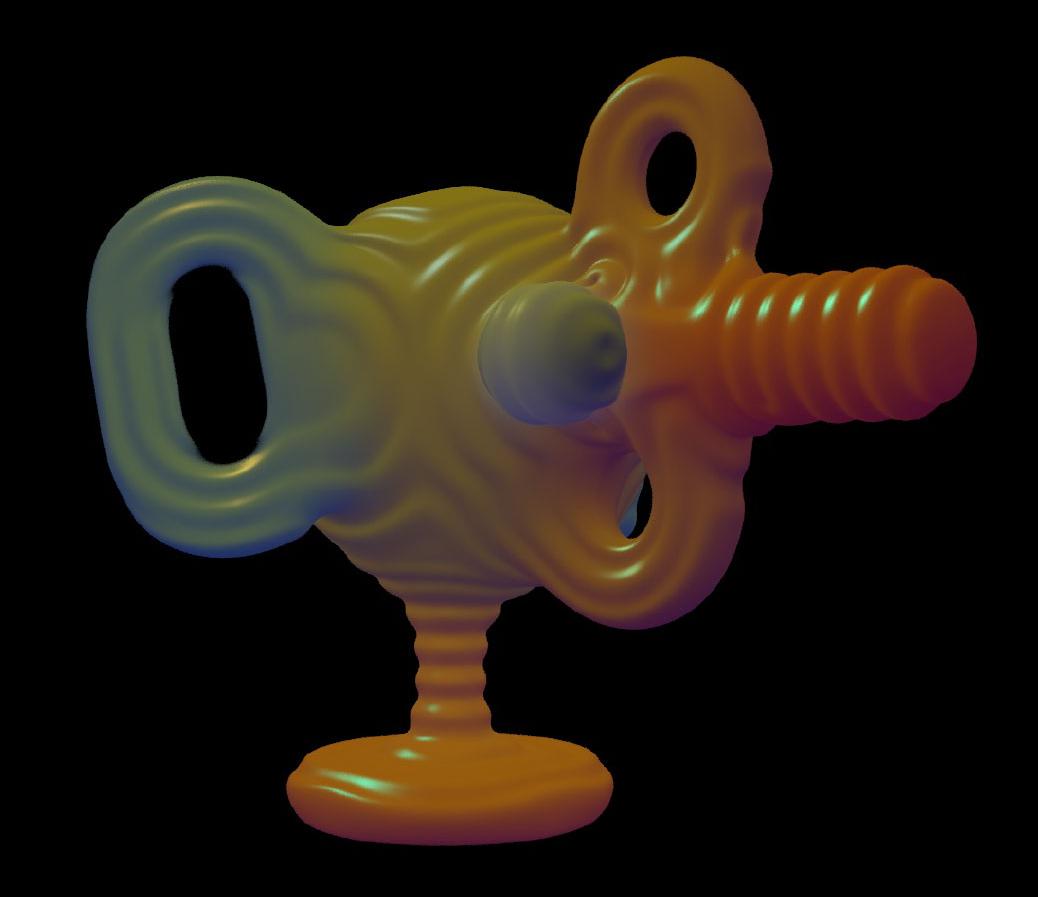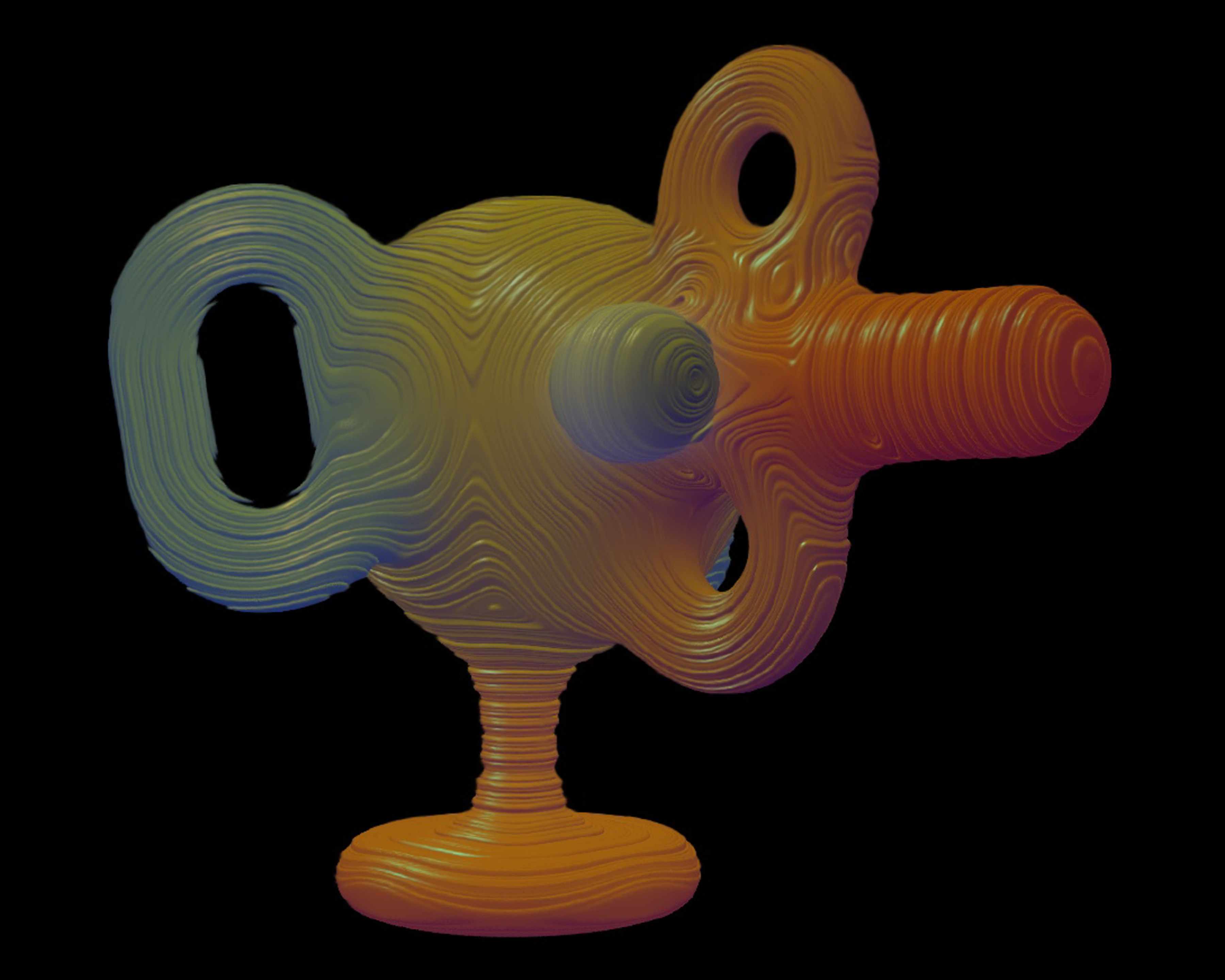
Coupled Modeling of Solid Textures and Implicit Shapes
Ergun Akleman and Jianer Chen
Introduction
In this paper, we present a technique for effective texturing of implicit surfaces. Our technique is based on usage of similar functions for the description of both implicit surfaces and solid textures. Modeling solid textures requires use of functions with almost unit gradient length. In order to construct such functions, we have discovered two operations which preserve almost unit gradient length property. Based on these operations, we have developed a technique similar to Constructive Soft Geometry for modeling both implicit surfaces and solid textures.
Motivation
One of the important problems in implicit modeling is effective texturing the implicit surfaces. Our goal in this paper is to develop a texturing scheme that can effectively provide uniform textures that can conform any orientable 2-manifold shapes.

|
| Textures over an irregular shape with several handles. |
Methodology
We have identified that the functions whose gradient length is equal to 1 (which we call unit gradient length functions) play a very important role to effectively control the thickness of layer, and obtain a regular layer thickness. Another important family of functions are the ones whose gradient length is not larger than 1 (which we call bounded gradient length functions). Both unit and bounded gradient length functions not only provide uniform layer thickness, but also yield fast rendering with the Lipschitz condition and high quality rendering with accurate sampling of volumes.

|
We have also discovered another functional operation to obtain bounded gradient length functions from unit gradient length functions. This operation which is given as wp(f1,f2)=log (exp( p*f1) + exp( p*f2))/p can describe approximate and exact set operations. In addition, it is closed over the set of bounded gradient legth functions. For high values of p, operation wp over functions whose gradient length almost equal to 1 creates new functions with almost unit length gradient functions. Operation wp can construct both G0 and G1 functions from G1 functions. Moreover, a large set of functions based on the operation wp can be updated in constant time.
By using the operation wp in a tree structure, several functions which are closely related to each other can easily be constructed. If one of these functions describe the shape of the objects, the other functions can be used to describe the layers layers that conforms well to the shape of the object. The opacities of objects which are shown in the figures are described as a combination of two bounded gradient legth functions f0 and f1 in the form of f0+sum(i=1,m) aj*cos(wj*f1)+1 where coefficients aj's are positive real numbers. Note that although the shapes are complex, the layers in Figures themselves conform well to the varied terrain and maintain a very regular thickness.

|
Conclusion
For the functions that are constructed by functional operations the complexity of a modeling function increases with the shape complexity. For complex shapes, therefore, function evaluation can be limiting factor. Even if the interactivity is achieved by simple shapes, interactivity cannot be guaranteed for complex shapes. An important property of the operation wp is that it is constant time updateable, i.e., a large set of functions based on the operation wp can be updated in constant time. In other words, computation of the functions described by wp during construction does not depend on the shape complexity. This property says that once the speed of volume rendering permits interactivity, our volume modeling approach will guarantee interactivity regardless of shape complexity.